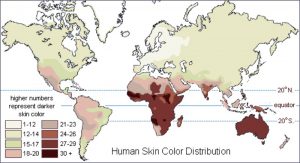Question
Gramps,
Where did the black race originate? As I read Abraham and consider things about Ham, and Canaanites and the priesthood, and Egypt and other things I’ve heard about lineage and such, I wonder how this all comes down from Cain, and how it filters past Noah, and into the Ethiopian or sub-Saharan Nubians. It confuses me. Were the Egyptians Black? Also how did this affect those with this lineage and the priesthood?
Sean
Answer
Dear Sean,
I don’t know if you are old enough to be aware, but in the past many theories abounded to try and explain where black people orginated, mostly in an attempt to explain why blacks were not allowed to hold the priesthood from the mid 1800’s until March 1978. None of those theories are official doctrine, in fact the church as specifically disavowed them. One of the false theories was that black people were descendants of Cain. It was supposed that dark skin was the curse placed upon Cain after he killed his brother, Abel. Others thought it was a curse placed on Ham’s descendants for his sin against his father, Noah. Some believed that blacks were inferior in some way. Others said that blacks had been less valiant in the pre-existence. I find all these theories hurtful; My personal opinion is that they are nothing but the idle theories of men.
In response to the “dark skin” theory, we don’t know if that was the mark that was placed upon Cain and his descendants. In Genesis 4:15 it states:
15 And the Lord said unto him, Therefore whosoever slayeth Cain, vengeance shall be taken on him sevenfold. And the Lord set a mark upon Cain, lest any finding him should kill him.
So we really don’t know what this mark was. Only that one was placed upon him.
According to Fairmormon.org:
The idea that the “mark of Cain” and the “curse of Ham” was a black skin is something that was used by many Protestants as a way to morally and biblically justify slavery. This idea did not originate with Latter-day Saints, although the existence of the priesthood ban prior to 1978 tends to cause some people to assume that it was a Latter-day Saint concept.
So why the Priesthood restriction? Simply put we don’t know for certain. During Joseph Smith’s time a few black men were given the Priesthood. Among them were Elijah Abel and Walker Lewis. Brigham Young declared that blacks could not hold the priesthood in 1852 and the restriction stood until 1978, when Pres. Kimball and the apostles received the revelation that the ban was to be lifted.
The church has published essays on this topic if you would like to learn more. What I have shared here came from the essay: Race and the Priesthood
There are other essays as well, and one talks specifically about race and the Book of Mormon. Here’s an excerpt:
“Obviously, Church leaders do not hold up the Book of Mormon as an authority on the science of racial origins or as a standard for human attractiveness. I believe that like Paul’s statements about women who wore braided hair or spoke in church, the significance of Nephite descriptions of the Lamanites’ skin is merely historical, not doctrinal.” 1 Corinthians 14:34–35; 1 Timothy 2:9–12.
That quote is from part 3 of the series, I will give you links to all of them.
A Personal Essay on Race and the Priesthood
Part 1 Revelations in the Summer of 1978
Part 2 Seeing as We Are Seen
Part 3 He Denieth None That Come unto Him
Part 4 Till We All Come in the Unity of the Faith
The short answer to your question, is that black skin is simply an adaption to deal with living in hot climates such as Africa. If you consider races in relation to where they originate on the globe you will see that people who live near the equator tend to have darker skin and hair. As you move north or south from the equator, the skin and hair get lighter. It’s simply a biological adaption.
Gramps








